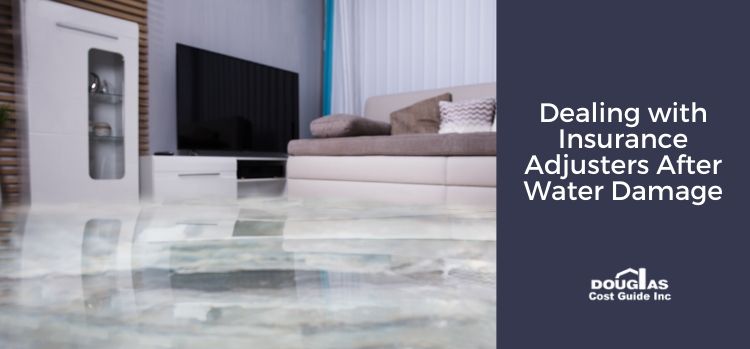Experiencing a flood of any magnitude in your home can be devastating to homeowners; however, taking the right steps after experiencing a flood loss can help alleviate the stresses and expedite the clean-up and claims process.
What should homeowners do after a flood loss when it comes to insurance?
The first step to take after a flood loss is to safely assess the damage. The term flood can be alarming; however, depending on the extent of the damage and the amount of water present, a claim may not be warranted. If you experience a few inches of water in your basement due to a sump pump malfunction, depending on your policy deductible and your previous claims history, you may not want to proceed with a claim.
Determining the cause of loss
Assessing what happened and where the water came from is a good place to start. Water in your home can be a result of many different factors. Assessing where the water came from will help determine if your policy has the proper coverages in place to cover a loss if a claim is necessary. Speaking with your agent or broker about the different types of water damage coverage and what is best for your home is a must.
Take photos and document damage
After assessing what happened, taking photos of the water and any damages is advisable. Emergency work to remove water and try to dry the area will need to be completed as soon as possible to avoid mould and any further loss; however, you’ll need to document the water and any damages as extensively as possible to provide to the adjuster/agent or broker in the event of a claim.
Determine if a disaster restoration company should be consulted
After everything has been carefully photographed and documented you’ll need to determine if a disaster restoration company will need to be called to complete the emergency clean-up work, or if it’s something that can be completed on your own. If there are a few inches of water in your basement and the water levels have not impacted the electrical sockets or drywall or compromised the flooring or any personal belongings, cleaning up the water on your own may save you the trouble of putting through a claim only to realize the work completed is under your deductible amount.
Completing Emergency Clean-Up
If clean-up is an easy process and you choose to complete water removal on your own, tracking the hours spent on clean-up is advised. Some companies will apply the hours spent on clean-up toward the deductible, or take the hours spent into consideration when paying out the claim.
If a disaster restoration company is required to complete the emergency work, you’ll need to arrange for one to come out to your house as soon as possible. If you’re not sure who to call to complete the emergency work, your insurance company will have a list of companies that they can suggest for you. It is worth noting that the companies your insurance company works with are preferred vendors and work extensively with insurance companies and therefore understand the claims process, documentation and what’s required; however, you do not have to select a disaster restoration company that your insurance provider suggests. It is your right to select whichever company you are most confident and comfortable with.
Once a disaster restoration company is selected, they will complete the clean-up and provide a quote to repair or replace any damage. The quote will help determine if you want to proceed with a claim. Calling your insurance company to report the loss, provide documentation and let them know if a disaster restoration company has been out, or if you’ll be in need of one is the next step.
Dealing with Insurance Adjusters
Working with a disaster restoration company helps alleviate some of the stresses when it comes to dealing with the insurance adjuster. Disaster restoration companies will take their own photos, complete their own documentation and work closely with the adjuster to ensure they have everything they need.
Dealing with an adjuster in the event of a flood loss is a more simplified process than dealing with an adjuster for a fire. The key to success is documenting the loss and completing the emergency work to avoid further loss or development of mould. The adjuster will need to know the cause of the loss, the extent of the damage to the home and any damage to contents. It is the adjuster’s job to assess the damage and determine if repair or replacement of damaged items and components will be more cost-effective. It could be determined that drying and sealing the drywall may be more cost-effective than replacing the drywall. Speak to your adjuster about concerns you may have and ask questions about any decisions they may make that you’re uncomfortable with.
Making a list of questions and concerns you have and reviewing them with your adjuster is advised. If you’re uncomfortable with the adjuster’s decisions, voicing them to your agent or broker is the next step. Hiring a third-party adjuster to assess the loss is also an option; keep in mind, the cost of hiring the third-party adjuster will be at your own expense. Flood losses, although devastating to homeowner’s are more common than other catastrophic losses; as such, the claims process is fairly streamlined and dealing with adjusters can be a smooth process if you take steps to document the loss and aren’t afraid to voice your questions or concerns.
When it comes to a loss related to a flood or water damage, ensure you’re armed with accurate and essential information. Consult the Douglas Residential Cost Guide to calculate your home replacement cost.

